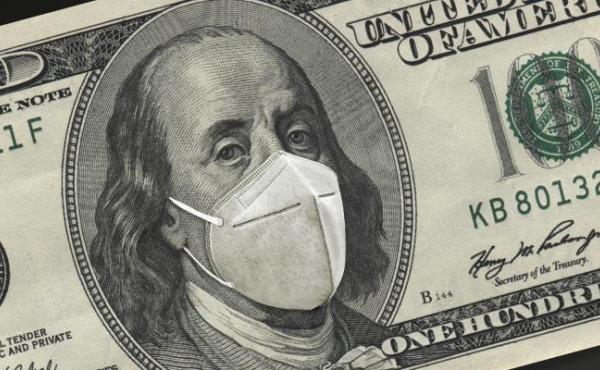
The ECGI blog is kindly supported by

Part One: COVID-19 as a reallocation shock
The outbreak of COVID-19 in early 2020 halted or hindered the operation of entire industries while enhancing that of others, depending on their vulnerability to social distancing requirements. For instance, the air travel and hospitality industries shut down almost entirely during the initial phase of the pandemic, while online retailers and software providers thrived, owing to the surge in demand for their services. As a result of the ensuing reshuffle of demand and also in the supply of labour across industries and firms, COVID-19 has been labelled a “reallocation shock”.
Researchers have examined the extent to which the impact of COVID-19 on corporations was moderated by the responses of capital markets and banks, as well as by corporate financial policies and by public policies. The impact of COVID-19 on stock returns was unprecedented. The sharpest stock price movements occurred immediately at the beginning of the pandemic, from February 24 to March 20, 2020, or the “fever period.”
The first companies to underperform were those with the largest exposure to international trade, especially with China (where the outbreak began), and firms with high leverage and low cash holdings experienced the sharpest stock price declines. The firms that were downgraded to “fallen angels” status at the outbreak were extremely leveraged, having issued large amounts of debt to take advantage of cheap market finance in the low interest-rate QE environment preceding the crisis.
Social distancing restrictions were key to the variations in stock price responses. Unsurprisingly, firms with greater labour intensity and located in areas with a greater drop in mobility endured worse stock performance. Initially the stock prices of firms most vulnerable to social distancing vastly underperformed relative to those of the more resilient firms, but the difference started reversing in April 2020, as information about the effectiveness of vaccines and about the policy response started to accumulate.
There is evidence that the culture of a company and its commitment to ESG policies also played a role in mitigating the impact of the shock. This could be explained by customer and investor loyalty in difficult times. It is also possible that these firms, being more concerned with the welfare of their stakeholders, and especially of their employees, were quicker and more effective in reorganising. One study showed that the more that CEOs mentioned human costs, demonstrating concern for employees, the better their stock performed from February to March 2020.
Firms controlled by families also featured a better stock price performance and operating profitability than other firms during the pandemic. This could be because they can count on implicit contracts with their workforce that give them greater flexibility in reacting to adverse shocks, for example, flexible wages. Firms with stronger corporate culture featured higher sales per employee, returns on assets, and profit margins in 2020. There is also evidence that firms with lower incidences of workplace injuries before the pandemic, experienced fewer workplace COVID-19 infections in 2020, with significantly lower declines in productivity and profitability, suggesting that a good workplace injury record can be a measure of firms’ organisational capital, reflecting their attention to workers’ welfare. This made them readier to reorganize when faced with contagion and to contain its spread.
We now know that the pandemic outbreak effect on stock market prices was not only sharp but also varied depending on financial flexibility, resilience to social distancing, and corporate culture. But what did we learn about resilience when it came to firm operations?
With regard to net sales, both the 2020 drop and the 2021 rebound were stronger for companies featuring low resilience to social distancing requirements than for high-resilience ones, based on indicators that measure firms’ reliance on face-to-face communication or close physical proximity in production or servicing customers. Their respective median growth rates was significantly different in 2020 but no longer so in 2021. On employment, low-resilience firms appear to have cut employment more aggressively in the United States than in Europe, even though they experienced a comparable percentage drop in sales. Contrary to sales growth, employment growth of high-resilience companies kept outpacing that of low-resilient ones in 2021. While assets grew significantly more in high-resilience firms, they grew in low-resilience ones, too. And in 2021 the rebound of European low-resilience companies was such that their asset growth did not differ significantly from that of high-resilience ones.
But how could firms whose sales and employment were battered by the crisis expand their balance sheets so vigorously? Part of the answer lies in the attempt by firms to boost their liquidity by raising external funding, an attempt largely successful due to the abundant liquidity supplied by securities markets and banks. Another part of the answer lies in fiscal policies that provided an unprecedented level of support to firms. The pattern was similar for unlisted firms, but the increase in the growth rate of unlisted firms’ assets is in sharp contrast to the slowdown observed for listed firms. This could be a reflection of the design of public support policies, such as loan guarantee programs. These were particularly targeted toward small and medium enterprises (SMEs), which are typically unlisted.
Small firms also include a disproportionately large fraction of firms in service industries (such as retail trade, hospitality, and catering) that were hit particularly hard by social distancing restrictions. Compounding this, early-stage startups were typically shunned by job seekers during the crisis in favour of more established firms. Moreover, venture capital shifted toward firms developing technologies relevant to an environment of social distancing and health pandemic concerns, with significant increases in the invested amount and the number of VC deals in such areas. On the whole, the figures suggest that the COVID-19 shock led to a reallocation of resources toward high-resilience industries, both in the United States and in Europe.
But where did the resources come from and how were they used?
To continue reading, see "Part Two: An abundant supply of funding"
Or jump directly to the paper: "COVID-19 and Corporate Finance"





